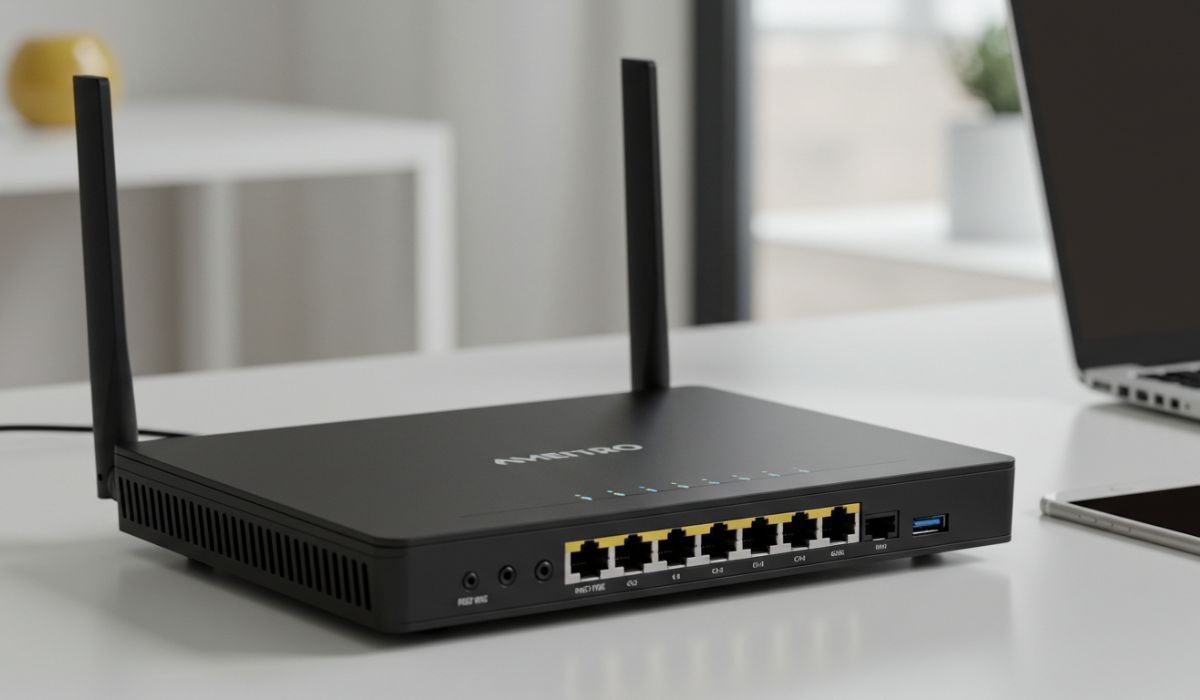A residential or small-business network relies on a good router. But routers don’t live forever. Knowing how long routers last, what their lifespan depends on, and what router lifespan is to be expected is key to planning upgrades before they are needed.
Here we’ll explain average device lifespan, unmistakable signs to look out for, and useful insights into when to replace a router.
Typical Router Lifespan
Most consumer routers still work for five to seven years. Enterprise routers designed for constant heavy duty tend to live longer, sometimes as long as ten years, but they are more expensive. The average router life expectancy is:
- 3–5 years for basic,
- low-cost models 5–7 years for mid-range,
- high-feature models7–10 years for high-end, business-class routers
Remember that hardware depreciates even when it is still powering on. Firmware updates will eventually get phased out, security patches will end, and changing wireless standards will leave behind older chips.
Reasons That Influence Router Life
There are some variables that indicate how long routers last in practical usage. Understanding these will enable you to get the most out of your gadget:
- Workload and Traffic Volume: Continuous high-bandwidth activities, streaming 4K video, hosting several video conferences, or big file transfers, stress the processor and radios more. A router operating at near-peak throughput 24/7 will last shorter than one that does light family browsing.
- Ventilation and Heat: Overheating speeds up component wear. When a router resides in a sealed cabinet or on top of a heat-generating device, its internal temperature increases. Correct airflow and dust elimination prolong life and keep routers in stable operation.
- Programming Adjustments and Securing Updated Firmware: Updates maintain the eventual performance standard and safety. Once a manufacturer has phased out support for a product, it will run without problems continuously on the device until such time that the patches no longer cause more vulnerabilities to merge in parts or decrease performance as the years roll by.
- Environmental Conditions: Excessive humidity, temperature fluctuations, and even increases in circuit voltages could lead to reduced working life of a router. For your router’s safety, use a surge protector or, better yet, an uninterruptible power supply (UPS) to mitigate such dangers.
Symptoms You Need to Replace Your Router
Here are ways to know if your router needs to be replaced:
- Frequent circuit interruptions: If devices keep disconnecting from the network often even with good signal strength, circuit failure might be the culprit.
- Slow speeds after upgrading: When your internet subscription speeds increase but the router limits throughput short of that, it’s time for an upgrade to a more powerful model.
- Overheating or Fan Noise: Unusual heat or boisterous cooling fans (on business-class devices) indicate worn components fighting to cool down.
- Lack of Support: No firmware upgrades for security flaws or to implement features indicate the router’s days are numbered.
- Incompatible with New Standards: If you’ve invested in Wi-Fi 6 devices but are connecting through an older Wi-Fi 4 or 5 router, you give up range, efficiency, and multi-device performance advantages.
Extending Router Life Tips
In order to get every possible day from your current router, try these simple steps:
- Update the Software: Ensure regular new updates from any site or manufacturer. Ramp up the router, keep it free from dust, and do not put it in small spaces to ensure more heat dissipation and signal dispersal.
- Use Quality Power Protection: A UPS or surge protector safeguards against brownouts and spikes that damage internal circuits.
- Restart Periodically: Regular scheduled reboots, weekly or every month, may eliminate memory leaks and maintain the device in good health.
- Limit Excessive Features: Turn off guest networks, old VPN servers, or premium services you don’t use.
Fewer running processes lighten the load and lose less heat.
Choosing Your Next Router
When you’re ready to upgrade, find gear that keeps pace with your network’s size and traffic mix:
- Assess Your Needs: Set the number of devices that you plan to connect, intended bandwidth, and space of coverage. Multi-story homes and garages and backyards demand stronger or additional access points.
- Discuss the Wireless Standards: And if you have many smart devices or plan to start streaming ultra-high-resolution content, then you should choose Wi-Fi 6 or above.
- Make sure QoS is enabled: Smart routers with excellent QoS implementations allow you to prioritize such traffic as video calls or online games for better performance.
- Seek Future Update Possibilities: Brands that have an excellent history of issuing timely firmware updates and keeping their end-of-life policies open are preferable.
- Get the Right Mix of Features and Price: Business-class models provide reliability and high-level security, albeit at a higher price. For the average home, a top-of-the-line consumer model is the perfect compromise.
Conclusion
Planning for the duration of how long routers last saves you from unexpected network outages. By monitoring device age and router performance and identifying telltale signs that it’s time to replace a router, you can have quick, safe connections. Using correct placement, power protection, and frequent updates increases your router’s lifespan, and a properly selected replacement gives you years of trouble-free service. Knowing your router’s lifespan gives you the power to keep your network optimized.
